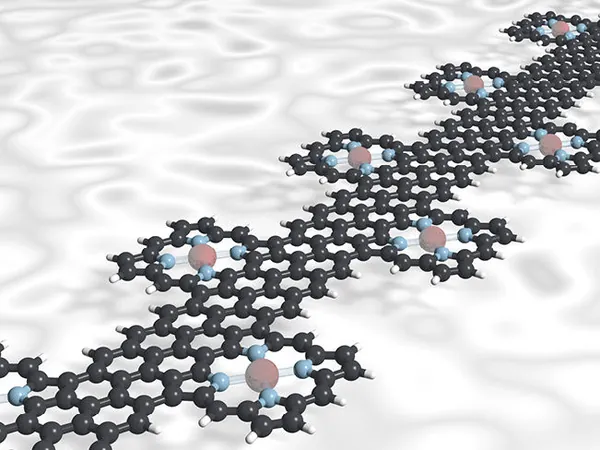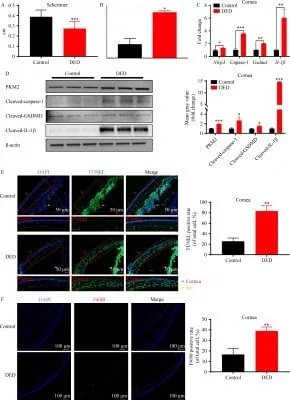
Unlocking the Future: Precision Molecules That Could Revolutionize Electronics
2025-08-26
Author: Li
Nature's Building Blocks for Tomorrow's Tech
Organic chemistry, the study of carbon compounds, is central to life on Earth, but it’s the metals that wield immense power in countless biochemical processes. Enter porphyrins—a unique group of chemical structures that marry hefty metal atoms like iron and cobalt with light organic compounds. These fascinating molecules are not just critical for processes like photosynthesis in plants and oxygen transport in our blood; they are also paving the way for advancements in molecular electronics.
Revolutionizing Molecular Connections
Researchers at Empa's nanotech@surfaces laboratory, in collaboration with experts from the Max Planck Institute for Polymer Research, have tackled the challenge of connecting individual molecules. Their groundbreaking study, recently published in *Nature Chemistry*, details how they successfully attached porphyrins to a graphene nanoribbon with astonishing precision.
Graphene: The Ultimate Molecular Wire
Graphene nanoribbons, narrow strips of the two-dimensional carbon material, boast diverse physical properties dependent on their width and edge shape. By utilizing a one-nanometer-wide ribbon with zigzag edges, the team positioned porphyrin molecules at regular intervals, alternating sides along the ribbon. This innovation allows for unprecedented control over electrical and magnetic features.
Harnessing Magnetic Forces
The unique geometry of the zigzag edges gives the graphene ribbon a distinctive type of magnetism. Meanwhile, the metal atoms in the porphyrins bring traditional magnetic properties to the table. The combination of these two magnetic properties opens a new realm for molecular electronics—a nanoscale cable connecting porphyrin molecules.
A Quantum Leap Forward
This development holds spectacular potential for quantum technology. With the possibility of creating interconnected qubits—quantum bits that store information—these graphene ribbons could redefine how we process data. According to Roman Fasel, head of the nanotech@surfaces laboratory, each porphyrin in the system acts as a building block for advanced computational systems.
Optical Wonders: The Pigment Effect
But there's more to porphyrins than just their magnetic magic. As pigments, they are optically active—think chlorophyll in plants. This characteristic means they can emit light whose wavelength shifts based on the molecular system's magnetic state. It's akin to a fleet of molecular lights, where subtle color changes can convey complex information.
A Toolbox for Innovation in Sensing
The implications extend to chemical sensing as well. Porphyrin molecules can be tailored by adding specific chemical groups, allowing them to interact with target substances and influence the conductivity of the graphene ribbon. “Our system serves as a versatile toolbox to tune various properties,” says Fasel.
The Road Ahead
As they forge ahead, researchers plan to experiment with different metal centers within the porphyrins and modify the graphene ribbon further, creating an even more adaptable electronic system. The synthesis of these complex structures requires high precision and expert collaboration; precursor molecules must be meticulously constructed and then subjected to extreme conditions to achieve atomic-level accuracy.
With backing from the Werner Siemens Foundation, the Empa team is on the brink of redefining the capabilities of molecular electronics. As they journey into the realm of designer materials, the future of quantum technologies has never looked brighter.



 Brasil (PT)
Brasil (PT)
 Canada (EN)
Canada (EN)
 Chile (ES)
Chile (ES)
 Česko (CS)
Česko (CS)
 대한민국 (KO)
대한민국 (KO)
 España (ES)
España (ES)
 France (FR)
France (FR)
 Hong Kong (EN)
Hong Kong (EN)
 Italia (IT)
Italia (IT)
 日本 (JA)
日本 (JA)
 Magyarország (HU)
Magyarország (HU)
 Norge (NO)
Norge (NO)
 Polska (PL)
Polska (PL)
 Schweiz (DE)
Schweiz (DE)
 Singapore (EN)
Singapore (EN)
 Sverige (SV)
Sverige (SV)
 Suomi (FI)
Suomi (FI)
 Türkiye (TR)
Türkiye (TR)
 الإمارات العربية المتحدة (AR)
الإمارات العربية المتحدة (AR)